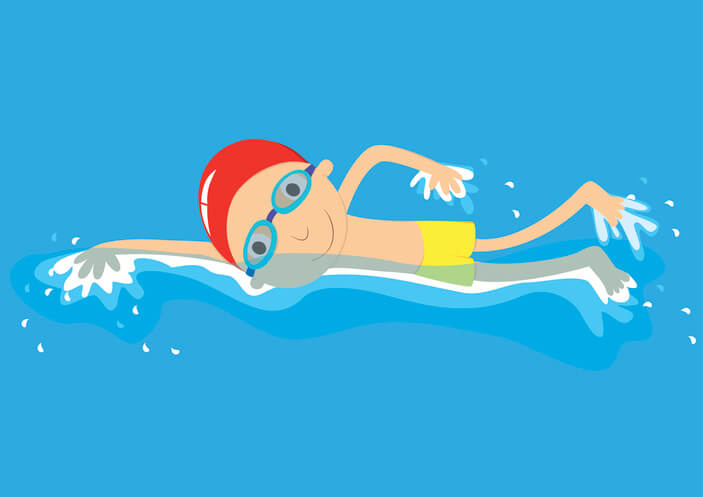Swimming is an important skill that also offers a lifetime of fun and recreation. Because of the gentle environment, swimming is something you’ll be able to do well after your body is no longer equipped for high-impact activities like running. Swimming also offers the benefits of improving heart and lung health and as well as working all muscle groups in the body. And by learning to swim, you’ll enjoy days at the beach or pool that much more.
Getting Started
If you’re a beginning swimmer or looking to teach your child how to swim, you’ll want to approach it by starting with the right swim strokes. Choosing the easiest swimming strokes will give you the best chance at learning to swim quickly and being able to enjoy your time in the water to the fullest.
Proper technique is also an important element of learning to swim. While there are many ways to simply keep yourself above water, learning proper technique will allow you to swim effectively, efficiently, and safely. Learning how to swim by starting with the easiest swimming strokes will help you get there.
Breaststroke

The breaststroke is arguably the easiest swimming stroke for any beginner. Because you keep your head out of the water, you may feel most comfortable starting with this basic stroke. Much like “doggie paddling,” this stroke allows new swimmers to breathe freely and transition slowly into putting their head underwater while swimming. You’ll also be able to see where you’re going so you can carefully navigate from one side of the pool to the other.
How to Swim Breaststroke
To swim the breaststroke, you’ll need to move your arms and legs together in a sweeping motion. Angle your head downward and hold your arms extended outward, tight against your head. Glide forward by doing a frog kick, then use your arms to continue to propel your body forward. This stroke is best performed with a strong kick and an intense pull to maximize speed and efficiency.
Sidestroke
While competitive swimmers never use sidestroke, it’s a good way for beginners to get comfortable in the water. Those with back and neck issues can also benefit from this stroke, as it doesn’t require a bending kick like the breaststroke. This is also a stroke used by lifeguards to easily pull an injured swimmer to safety.
How to Swim Sidestroke
To do sidestroke, spread out your arms and legs to full extension. Perform a scissor kick (rather than a frog-leg kick like with the breaststroke), and then pull forward with your arms. You’ll be swimming on your side and facing the wall of the pool, rather than facing the bottom of the pool.
Freestyle
While freestyle involves some more advanced breathing techniques, it’s a stroke that can be taught to beginners without worrying about the breathing right away. Beginners can simply hold their breath and take in air when they pop out of the water. Freestyle is a fast stroke that’s excellent for long-distance swimming and will be of great use throughout your life.
How to Swim Freestyle
Perform the freestyle stroke by rotating your entire body in and out of the water at once, including arms, legs, and head. Your kick will not be as important as your upper body strength in this stroke. Take a breath when your head reaches the top of the water after a full rotation.
Sign Up for Classes with SwimJim
Swimming isn’t something that can be easily explained in writing, so you’re likely to need more assistance in learning even the easiest swimming strokes. If you’re ready to get started, contact SwimJim today. We offer swimming lessons to swimmers of all ages and have an experienced team of swim teachers ready to help you feel comfortable in the pool.
Our focus on happiness, health, and safety ensures that you’ll have a positive experience throughout the learning stages of every lesson. Contact us today for more information about our swimming classes. We’ll find the right class to suit you or your child’s needs.
